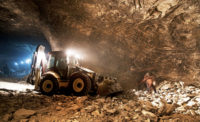It’s National Nanotechnology Day

It’s a big day for some teeny tiny particles. Today has been designated “National Technology Day” by the U.S. nanotechnology community. The goal, according to Dr. John Howard, Director of the National Institute for Occupational Safety and Health (NIOSH): to inform the public about nanotechnology, share scientific accomplishments that benefit industry and society, and promote its future possibilities and benefits.
Safety concerns are also on the agenda.
Nanotechnology is the manipulation of matter on a near-atomic scale with the goal of developing new and improved advancements in medicine, consumer products, energy, materials, manufacturing, and other fields. Because subatomic particles behave differently than their same-composition larger counterparts, they have unique capabilities – many of which are still being discovered. As with any new technology, it is important to identify and mitigate potential hazards or risks.
From the NIOSH website:
Because of the potential for inhaling the very small particles into the lungs, a considerable amount of research has focused on the effectiveness of respiratory protection for workers dealing with nanoparticles. Early indications are that some nanoparticle exposures can result in serious health effects involving pulmonary and cardiovascular systems and possibly other organ systems.
An estimated 150,000 in the U.S. and 400,000 workers are potentially exposed to nanotechnology hazards, with the global figure expected to climb to 6 million workers by the year 2020.
As the leading federal agency conducting research and providing guidance on the occupational safety and health implications and applications of nanotechnology, NIOSH has developed focused practices for small businesses, medical surveillance of nanotechnology workers, and effective engineering controls.
The agency has also produced risk assessments including recommended occupational exposure limits for ultrafine titanium dioxide and carbon nanotubes. Learn more by visiting the NIOSH website.
In terms of disseminating that information, NIOSH “is bringing together Wikipedians and scientists to lead an effort to update Wikipedia articles on health and safety information pertaining to nanomaterials,” said Howard. “Wikipedia editors from the Midwest will join NIOSH scientists in Cincinnati to learn the latest advances in nanotechnology health and safety and communicate that information as content on Wikipedia. This effort will provide the National Nanotechnology Coordination Office with additional resources to share with the U.S. National Nanotechnology Initiative.”
Looking for a reprint of this article?
From high-res PDFs to custom plaques, order your copy today!






